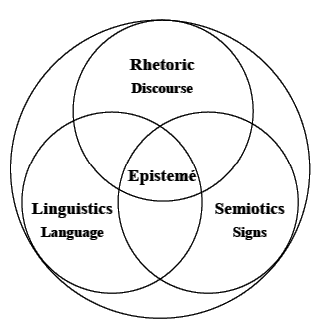
 Traditionally, Hermeneutics has been the methodical study of the interpretation and understanding of texts. From the time of Euhemeros, a Greek mythologist of about 300 BCE, until the early 19th century OCE, the main focus of Hermeneutics was upon mythical and other religious texts. In the 19th and 20th centuries, however, the subject was broadened to include not only texts, but also of the world itself. Hence, Hermeneutics now can be applied either to narrative, in which it constitutes a means to facilitate our understanding of the use of directed and intentional language to convey social and cultural information; or it can be applied to the world at large, it can be directed to Nature itself in order to facilitate our understanding of the natural World. The former of these applications is called the Hermenuetics of Narrative, while the latter may still be called the Philosophy of Nature. Traditionally, Hermeneutics has been the methodical study of the interpretation and understanding of texts. From the time of Euhemeros, a Greek mythologist of about 300 BCE, until the early 19th century OCE, the main focus of Hermeneutics was upon mythical and other religious texts. In the 19th and 20th centuries, however, the subject was broadened to include not only texts, but also of the world itself. Hence, Hermeneutics now can be applied either to narrative, in which it constitutes a means to facilitate our understanding of the use of directed and intentional language to convey social and cultural information; or it can be applied to the world at large, it can be directed to Nature itself in order to facilitate our understanding of the natural World. The former of these applications is called the Hermenuetics of Narrative, while the latter may still be called the Philosophy of Nature.
 These two subjects, then—the Hermeneutics of Narrative and the Philosophy of Nature—must go hand-in-hand in our attempt to understand experience. Appropriately enough, the methodology in each field consists in the interplay of several different, though not unrelated, disciplines. The accompanying Hermeneutics Diagram (see link below-right) illustrates the form hermeneusis takes in each of the two fields. In the Philosophy of Nature—which consists of Aesthetics, Logics, and Ethics—the approach begins traditionally with the Natural Sciences; while in the Hermeneutics of Narrative—which consists of Semiotics, Linguistics, and Rhetoric—the emphasis falls more naturally upon the Human Sciences and literary Arts. Admittedly, each of these hermeneutic approaches will benefit from the methods of the other; but we naturally will turn to the primary emphasis in each field. Accordingly, both Philosophy and Hermeneuitcs will increase our understanding of the World in different, but (again) not unrelated, ways. These two subjects, then—the Hermeneutics of Narrative and the Philosophy of Nature—must go hand-in-hand in our attempt to understand experience. Appropriately enough, the methodology in each field consists in the interplay of several different, though not unrelated, disciplines. The accompanying Hermeneutics Diagram (see link below-right) illustrates the form hermeneusis takes in each of the two fields. In the Philosophy of Nature—which consists of Aesthetics, Logics, and Ethics—the approach begins traditionally with the Natural Sciences; while in the Hermeneutics of Narrative—which consists of Semiotics, Linguistics, and Rhetoric—the emphasis falls more naturally upon the Human Sciences and literary Arts. Admittedly, each of these hermeneutic approaches will benefit from the methods of the other; but we naturally will turn to the primary emphasis in each field. Accordingly, both Philosophy and Hermeneuitcs will increase our understanding of the World in different, but (again) not unrelated, ways.
|

